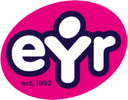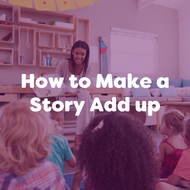How to Make a Story Add up
Posted by EYR Team on 23rd Sep 2019
read more
This article has been written by storytelling specialists, Tonya and Natasha, from Little Creative Days. In this blog they explore how to combine early maths and early literacy to support children's development
When you’re thinking of teaching children about maths how many of you think of reaching for a story? It’s probably not your first thought and I suspect you go for a box of bricks or counters first. But using a story can make learning maths a whole lot of fun and much more meaningful!
Using stories is a great way to introduce children to maths. Why? Because stories help us put everything into context and create meaning. Using stories will bring maths problems and solutions to life which builds a greater understanding.
Stories are also powerful because they engage our emotions, and this makes the learning much more memorable. We’re hardwired to learn this way so children will find it easier to learn. It also helps to build vocabulary and language patterns at the same time, so you get a double benefit.
Using stories in various ways can also help those who may have dyscalculia which is something that may not be picked up on until much later but it will mean that the child will still get the benefit of learning maths related problems from an early age
So how do you use stories to teach maths?
Rhymes are great and I bet we can all remember 12345 once I caught a fish alive…… Why not use the 5 Fierce Dragons? This is a great way to help children interact by using finger puppets, and will help them to remember the rhyme and the number sequences.
Picture books are another great way to engage young children. You can use them to help the children learn to count. E.g. by using Tiddler by Julia Donaldson you can get the children to count how many blue fish there are on the page. Better still why not get the children to make the blue fish then line them up but leave a gap. Add a fish into the line and model writing the number sentence to show +1 and talk about the numbers. Or, you could put a number on each fish and get the children to add up a 5 + 1 and ask them to choose which number that would be.
There will be an abundance of opportunities in stories to help children understand lots of maths concepts such as telling the time or measurements, eg is something longer or shorter. So again using Tiddler you can compare the length of the eels.
So the next time you pick up a picture book to tell a story why not add some maths in as well - we guarantee you will multiply the enjoyment!



